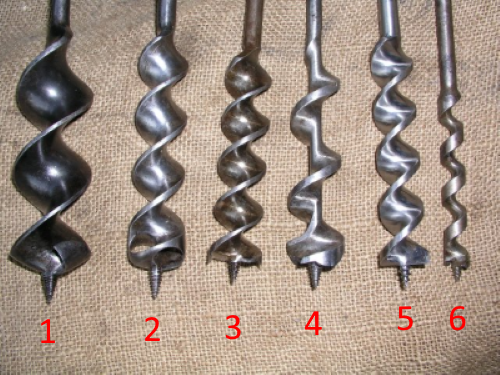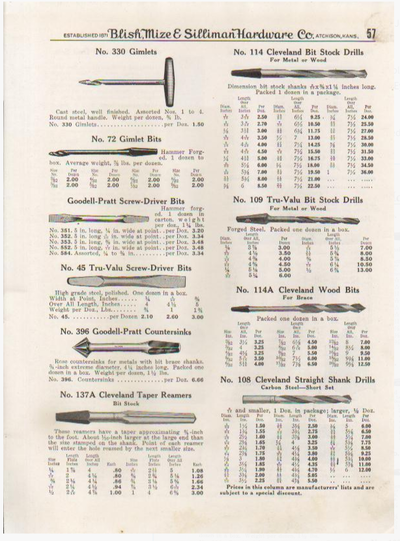Auger Bits: Difference between revisions
From Wayne's Dusty Box of Words
No edit summary |
No edit summary |
||
| Line 10: | Line 10: | ||
[[File:Auger Bit Styles.png|center|500px|Auger Bits]] | [[File:Auger Bit Styles.png|center|500px|Auger Bits]] | ||
[[File:Drill Bit Catalog Page.png|400px|center|Drill Bit Catalog Page]] | |||
[[Category:Woodworking]] | [[Category:Woodworking]] | ||
[[Category:Tool Identification]] | [[Category:Tool Identification]] | ||
Revision as of 05:35, 10 January 2021
During the bit & brace era, auger bits ruled. These are the 6 most common types you will see:
- Gedge pattern - Good for use in end grain, and at an angle to a surface because there are no spurs to catch and throw it offline.
- Solid Nose or Bull Nose - Uses as above but more robust. Can be used to enlarge an existing hole.
- Russell Jennings pattern - Flat cutting edges coupled with edge spurs make clean accurate holes. Spurs are vulnerable to damage if used roughly.
- Solid Centre or Irwin pattern - A strong solid stem with only one spiral. May have Jennings, Scotch or Bull Nose cutters, and then has their strengths and weaknesses.
- Scotch pattern - The upwards facing side wings make this bit suitable for use in hardwoods, and rough work. Often found on 'T' or 'bar' or 'eye' augers, which are sometimes referred to as Scotch Eye augers. Note that the eye itself has no particular Scottish connection, it is the cutter that is Scotch.
- L'Hommedieu pattern - Not seen that often, but the open spiral is supposed to be disinclined to get stuck in the hole.

